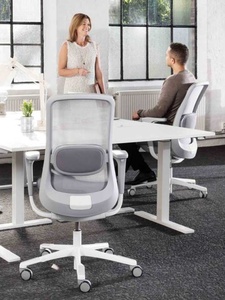KNEE PAIN DEMYSTIFIED
Knee injuries are common and the fact that most of us have had at least one episode of knee joint pain in our lifetime is standing evidence of the fact. While most minor knee injuries resolve without any active medications or surgical intervention there would still be some which would need the opinion of an orthopaedic surgeon.
Statistics indicate the 19.5% of the population is suffering from knee pain at any point of time. This makes it more than evident that knee pain continues to be one malady that spares a select few. Knee joint pain is seldom spontaneous and regardless of whether it is due to a medical condition or an injury it can be equally incapacitating.
KNEE PAIN – THE CAUSE
There are numerous causes and trigger factors which could be instrumental in causing knee pain. Thus predictably knee pain causes are diverse and may range from medical conditions such as arthritis and gout through to injuries.
Injuries continue to be the most frequent cause of knee problems thus regardless of whether one is suffering from knee joint pain or even knee pain behind the knee, the cause is usually injuries. To further elaborate injuries may be acute such as a sudden fall on a bent knee or an abnormal twisting movement while running or climbing stairs.
On the contrary overuse of the joint or demographic factors like increasing age may also contribute to the wear and tear of the knee and thus lead to knee problems in general and knee pain in particular.
MANAGING KNEE PAIN
The treatment option adopted would depend on the cause. To further elaborate knee pain causes like a ruptured ligament would require a different modality of treatment as compared to those with rheumatoid arthritis or gout.
Conceptually the first line of treatment would invariably include rest, immobilization, ice packs and medications. The more common class of medications are pain killers and anti-inflammatory medicines.
On the contrary muscle strengthening around the knee joint has a significant role to play in preventing and treating knee problems like knee pain. Concurrently body balance control exercises under the supervision of a physical therapist have proved to be beneficial and thus continue to be the mainstay of treating knee pain regardless of the cause.
INJECTIONS AND INTERVENTIONS
When knee pain is resistant to treatment the preferred option is to inject medications like corticosteroids directly into the knee joint. This evidently helps minimise pain associated with arthritis. On the contrary the new buzzword in managing knee joint pain is about lubricating the joint. This is best done by injecting a thick fluid directly into the knee joint.
SURGICAL OPTIONS
Knee problems due to injury may well require elective surgery at a later date. The term is suggestive considering the fact that surgery elective surgery means that it can be done at a later date. Thus you would have the opportunity to seek a second opinion and importantly can weigh out pros and cons of surgical intervention.
Arthroscopy is arguably the new buzzword in surgery where trauma is the trigger for knee pain. The procedure works on the concept of making small incisions around the region of the knee joint and removal of small dislodged or loose pieces of bone and concurrently repairing the torn ligaments if present.
ERGONOMICALLY MANAGING THE KNEE INJURY
The knee injury may result in the knee joint being immobilized where the leg will become effectively locked. There are chair options like the arthrodesis chair which can be customised to enable the leg to remain straight if the knee is locked. The position of the leg removes the stress on the hip joint while the uninjured leg can sit normally.
If the knee injury requires leg support, it is recommended that a leg rest is used. For comfort ensure the correct cushioning is used and also an ergonomic design to correctly position the leg. Both single and double leg rests are available depending on the needs of the specific condition. The leg rest should be height adjustable to position the leg at the optimum height for different sized users.















